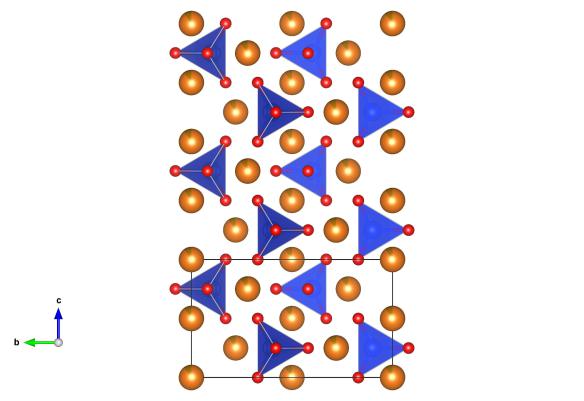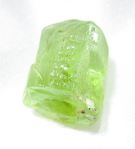What is our planet made out of? (2) Olivine
What does it look like?

Image generated by the VESTA (Visualisation for Electronic and STructural analysis) software http://jp-minerals.org/vesta/en/
What is it?

Many olivine crystals have a lovely grass-green colour to them. Photo taken by Azuncha.
Olivine, like feldspar, comes in two main types (known as forsterite and fayalite) but unlike the feldspar minerals the crystal structure of these are both the same. The difference is that forsterite has magnesium atoms living in between the silicate tetrahedra, and fayalite has iron instead. Most natural olivine crystals actually have a mixture of iron and magnesium atoms within them. Olivine is an important mineral in the crust under the sea, but also in the first part of the mantle – the increasingly hot beginning of our Earth's interior. Olivine is also, apparently, the ideal rock to use as hot stones in saunas. This is because of its high density and resistance to weathering.
Where did the structure come from?
The structure of olivine as originally determined by W. L. Bragg is #1010497 in the Crystallographic Open Database.






